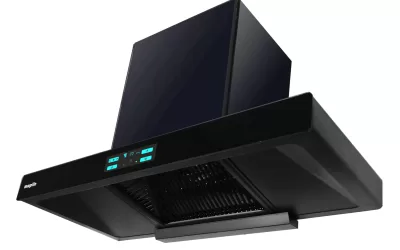- Introduction To Vegetable Cutting Machine
- 1. Types of Vegetable Cutting Machines
- 2. Preparing the Vegetable Cutting Machine for Operation
- 3. Preparing the Vegetables
- 4. Operating the Vegetable Cutting Machine
- 5. Safety Considerations
- 6. Cleaning and Maintenance
- 7. Troubleshooting Common Issues
- Conclusion
Introduction To Vegetable Cutting Machine
Vegetable cutting machines are essential kitchen tools for commercial kitchens, catering businesses, and even busy home kitchens. These machines make the process of chopping, slicing, dicing, and shredding vegetables faster, more efficient, and safer. Proper usage ensures consistency in the cuts, reduces wastage, and significantly enhances productivity. In this guide, we will go through a detailed, step-by-step approach to operating a vegetable cutting machine, covering everything from setup to maintenance, safety tips, and troubleshooting.
Vegetable cutting machines come in various models and sizes, from small manual machines to fully automated electric models designed for large-scale commercial use. These machines are versatile, capable of cutting various types of vegetables into different shapes and sizes, including slices, cubes, sticks, and julienne cuts. The primary goal of using a vegetable cutting machine is to save time, reduce manual labor, and maintain uniformity in vegetable cutting.
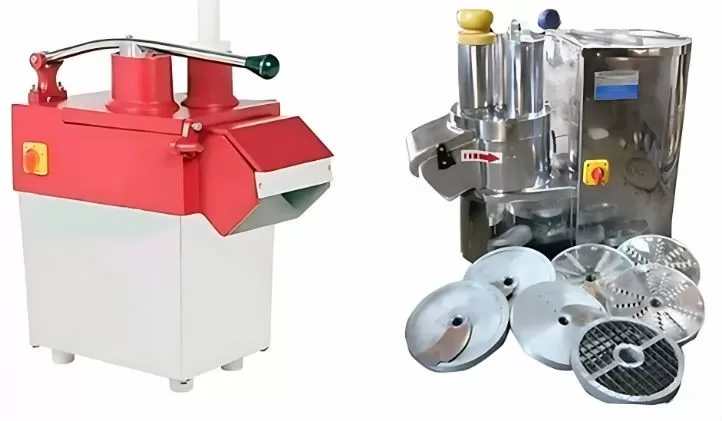
1. Types of Vegetable Cutting Machines
-
Before operating a vegetable cutting machine, it’s important to know the different types available on the market and their specific features.
1.1 Manual Vegetable Cutting Machines
These machines operate without electricity and are usually hand-cranked or lever-operated. They’re suitable for small-scale kitchens or for cutting a smaller volume of vegetables.
- Advantages: Portable, no power source needed, relatively affordable, and easy to use.
- Disadvantages: Limited capacity and can be slower than electric versions.
1.2 Electric Vegetable Cutting Machines
Electric models are more commonly used in commercial kitchens and catering businesses due to their speed and efficiency. These machines are equipped with various blades and settings for different types of cuts.
- Advantages: Fast, efficient, handles large quantities of vegetables, and offers multiple cutting styles.
- Disadvantages: Requires electricity and may be more complex to clean.
1.3 Automatic Vegetable Cutting Machines
These machines are designed for industrial-scale vegetable processing and are fully automated. They can cut, slice, or dice a large volume of vegetables without manual intervention.
- Advantages: High capacity, fully automated, reduces manual labor significantly.
- Disadvantages: Expensive and requires professional maintenance.
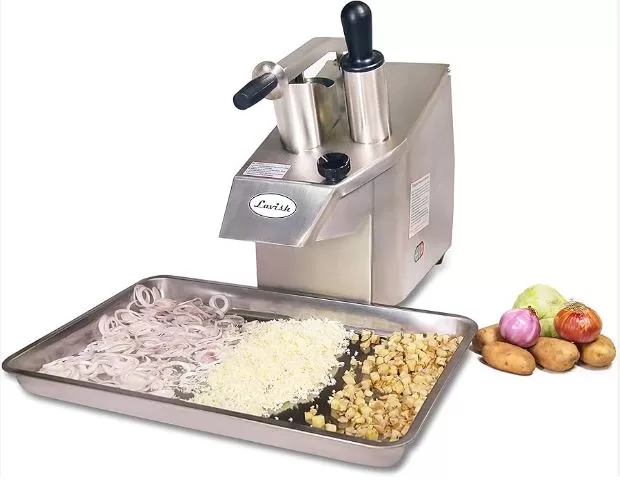
2. Preparing the Vegetable Cutting Machine for Operation
Proper preparation of the machine is key to ensuring efficient operation and avoiding any technical issues during use. This section covers how to prepare and set up the machine before starting.
2.1 Reading the User Manual
Before operating any machine, it’s crucial to thoroughly read and understand the manufacturer’s user manual. This provides specific details on how to assemble, use, and maintain the machine properly. It also highlights safety features and precautions that must be taken into account for the specific model you’re using.
2.2 Assembling the Machine
Most vegetable cutting machines come with several detachable parts that need to be assembled before use. Follow the manufacturer’s guidelines for proper assembly. Key components may include:
- Blade attachment: Choose the correct blade based on the desired cut. Most machines come with interchangeable blades for slicing, dicing, or grating.
- Vegetable chute: Ensure the chute is securely attached. This is where the vegetables are fed into the machine.
- Motor housing (for electric machines): Make sure the motor is properly connected to the cutting mechanism.
Double-check all connections to make sure they are secure and the machine is assembled correctly.
2.3 Cleaning the Machine Before Use
Before operating the machine, it’s essential to clean all parts to ensure food safety:
- Blades: Remove the blades and wash them in warm, soapy water. Dry them thoroughly to prevent rusting.
- Chute and other components: Wipe down all other machine parts with a clean, damp cloth.
- Base and motor: For electric machines, clean the exterior without getting the motor wet.
Cleaning the machine before use ensures there is no contamination from dust or manufacturing residues.
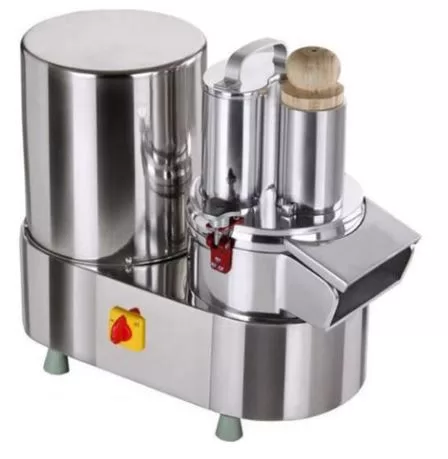
3. Preparing the Vegetables
-
Vegetable preparation is just as important as preparing the machine. Proper preparation ensures that the vegetables are fed into the machine smoothly and that the final cuts are precise.
3.1 Washing and Peeling
Start by thoroughly washing all vegetables to remove dirt, pesticides, and contaminants. Some vegetables may need to be peeled, such as carrots, potatoes, and cucumbers. Use a peeler to remove the skin, or you can use the machine’s peeling attachment if available.
3.2 Cutting into Manageable Sizes
Before feeding the vegetables into the machine, cut them into pieces small enough to fit into the machine’s chute. This not only ensures smooth operation but also prevents the machine from jamming or malfunctioning.
- For manual machines: You might need to cut vegetables into smaller chunks since manual machines have limited capacity.
- For electric or automatic machines: The machine will typically handle larger pieces, but ensuring they fit into the chute is still necessary.
3.3 Sorting Vegetables by Type
If you are cutting multiple types of vegetables, it’s important to sort them based on the desired cut and cooking method. For example, firm vegetables like carrots and potatoes may require different blades or settings compared to softer vegetables like tomatoes.
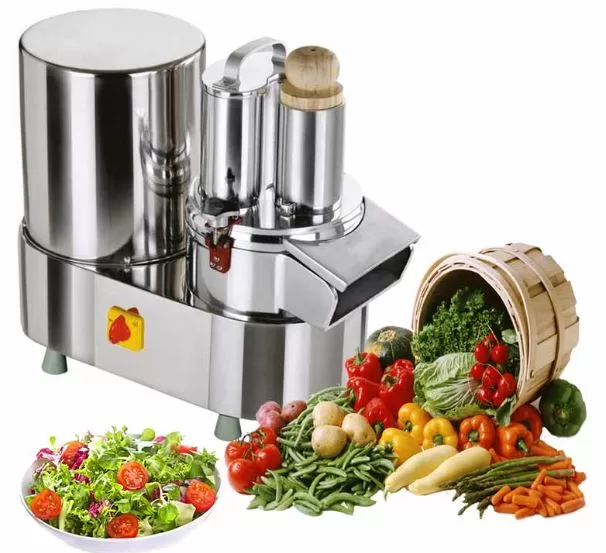
4. Operating the Vegetable Cutting Machine
-
Once the machine and vegetables are ready, it’s time to start the cutting process. Here’s a step-by-step guide to operating both manual and electric vegetable cutting machines.
4.1 Operating a Manual Vegetable Cutting Machine
Manual machines require more physical effort but are straightforward to use. Follow these steps:
- Place the machine on a stable surface: Make sure the machine is secure and won’t move while you’re operating it.
- Insert the vegetable into the chute: Place the prepared vegetable into the feeding chute. You may need to press down lightly to ensure it is positioned correctly.
- Turn the handle or operate the lever: Start cranking the handle or pressing the lever to push the vegetable through the blade. This motion slices, dices, or grates the vegetable, depending on the blade used.
- Remove the cut vegetables: Once cut, the vegetables will fall into a collection container or onto a cutting board placed below the machine.
- Repeat the process: Continue feeding vegetables into the machine until all are cut. Periodically check the blade for any blockages or buildup.
4.2 Operating an Electric Vegetable Cutting Machine
Electric machines are more efficient and require minimal physical effort. Here’s how to operate one:
- Plug in the machine and turn it on: Ensure the machine is connected to a power source and turn it on using the switch. Some machines may have adjustable speed settings; choose the one that best fits the vegetable you are cutting.
- Feed the vegetables into the chute: Use the feeding tool or push rod to guide the vegetable into the machine. Never use your hands to push the vegetable down.
- Monitor the process: The machine will automatically slice, dice, or grate the vegetables as they pass through the blades. Monitor the process to ensure everything is functioning smoothly.
- Collect the vegetables: The cut vegetables will be dispensed into a container or onto a tray. Make sure the container is large enough to hold the quantity of vegetables you’re processing.
- Adjust settings as needed: Some machines allow you to change the cutting size or shape mid-operation. Stop the machine, switch the blade or adjust the settings, and resume operation.
4.3 Operating an Automatic Vegetable Cutting Machine
For fully automated machines, the process is even more straightforward:
- Program the machine: Select the cutting mode, speed, and vegetable type on the machine’s control panel.
- Feed vegetables in bulk: Automated machines can handle larger quantities of vegetables at once, so you can feed multiple vegetables into the machine simultaneously.
- Allow the machine to run: The machine will automatically process the vegetables and dispense them into a container.
- Monitor the output: Ensure that the vegetables are being cut uniformly and adjust the settings if necessary.
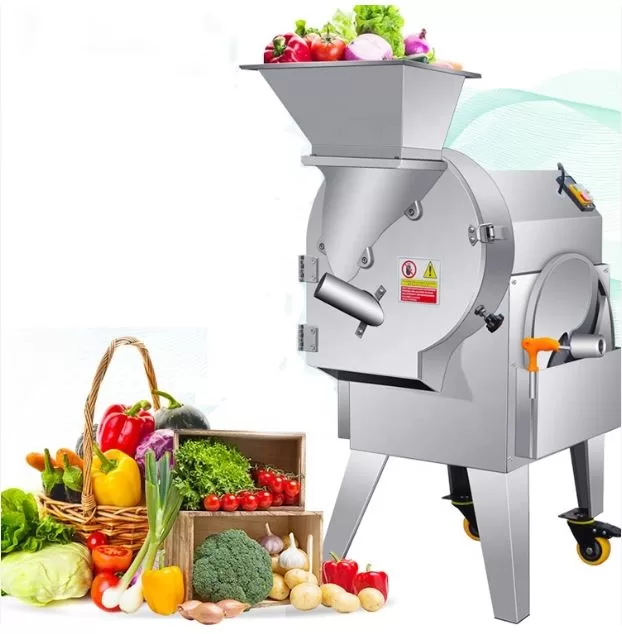
5. Safety Considerations
Safety should always be a priority when operating vegetable cutting machines. Follow these guidelines to minimize risks and ensure safe operation.
5.1 Blade Safety
Blades in vegetable cutting machines are extremely sharp. Always handle them with care:
- Wear protective gloves: When handling or cleaning the blades, wear cut-resistant gloves.
- Never use your hands to push vegetables: Always use a push rod or feeding tool provided with the machine.
- Keep fingers away from the cutting area: Ensure that your hands stay clear of the blades, especially when loading the machine.
5.2 Electrical Safety (for Electric Machines)
When operating electric vegetable cutting machines, it’s important to follow electrical safety guidelines:
- Ensure dry conditions: Never operate the machine in wet or damp conditions to prevent electric shocks.
- Use grounded outlets: Always plug the machine into a properly grounded outlet to reduce the risk of electrical faults.
- Unplug when not in use: Disconnect the machine from the power source when cleaning or when it’s not in operation.
5.3 Machine Stability
Ensure that the machine is placed on a stable, flat surface during use. An unstable machine can tip over, leading to accidents or damage.
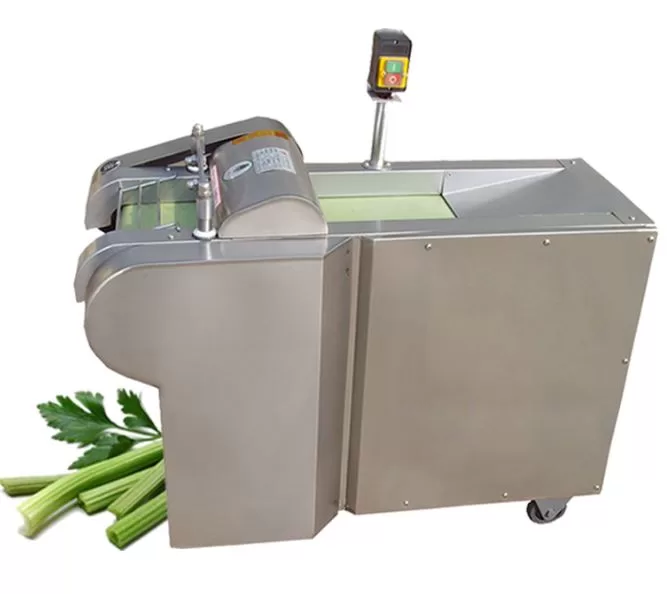
6. Cleaning and Maintenance
-
Proper cleaning and maintenance of the vegetable cutting machine ensure long-term functionality and hygiene.
6.1 Cleaning After Use
After each use, thoroughly clean the machine:
- Unplug the machine: Always disconnect the machine from the power source before cleaning.
- Disassemble parts: Remove the blades, chute, and any other detachable parts. Wash them in warm, soapy water.
- Wipe down the exterior: Use a damp cloth to clean the machine’s exterior, ensuring that the motor and electrical components are not exposed to water.
- Dry all components: Make sure all parts are completely dry before reassembling the machine to prevent rust or corrosion.
6.2 Regular Maintenance
Regular maintenance ensures that your machine operates efficiently:
- Lubricate moving parts: If your machine has moving parts like gears or cranks, apply food-safe lubricant to keep them running smoothly.
- Check for wear and tear: Inspect the blades regularly for dullness or damage. Replace them if necessary to ensure clean and efficient cuts.
- Tighten loose screws and bolts: Periodically check the machine for any loose screws, bolts, or connections and tighten them as needed.
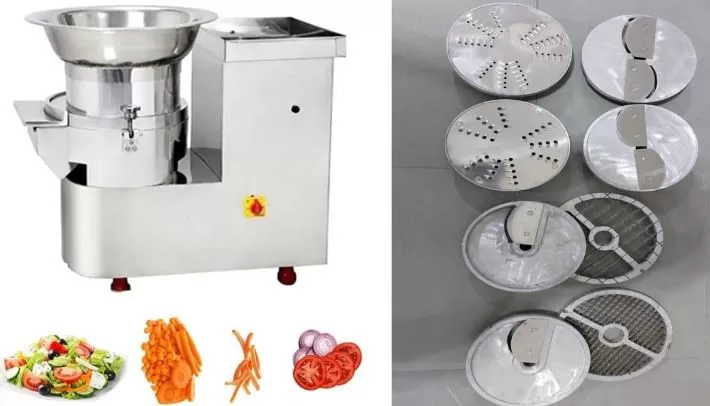
7. Troubleshooting Common Issues
Even with proper use, issues may arise during operation. Here are some common problems and solutions:
7.1 Jamming
If the machine becomes jammed:
- Turn off the machine: Always turn off and unplug the machine before attempting to clear a jam.
- Remove the blockage: Disassemble the chute and blade area to remove any vegetable pieces causing the jam.
- Avoid overloading the chute: Feed smaller quantities of vegetables to prevent jamming.
7.2 Uneven Cuts
If the vegetables are not being cut evenly:
- Check the blade: A dull or improperly installed blade can lead to uneven cuts. Ensure the blade is sharp and properly positioned.
- Feed the vegetables correctly: Ensure that the vegetables are being fed into the machine evenly and are not crooked or bunched up.
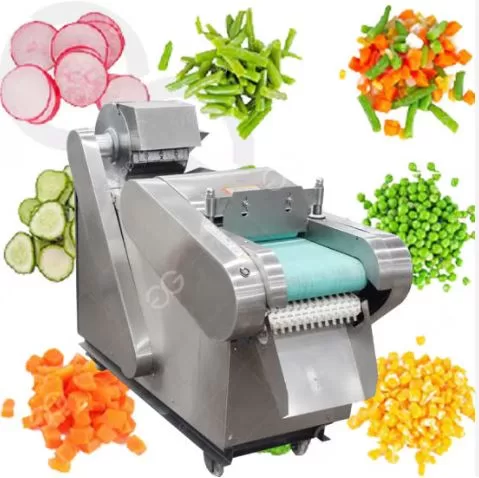
Conclusion
Operating a vegetable cutting machine requires understanding its type, proper preparation of both the machine and the vegetables, and adhering to safety guidelines. By following the step-by-step procedures outlined in this comprehensive guide, you can efficiently use a vegetable cutting machine to enhance your kitchen’s productivity. Regular cleaning and maintenance will ensure the machine’s longevity, while troubleshooting common issues will help you avoid downtime. Whether you’re operating a manual, electric, or automatic vegetable cutting machine, mastery of the process will significantly improve your kitchen’s efficiency and output.
About Author sudeshna mukherjee
You May Also Like…
2024 Buyer’s Guide: How to Choose the Best Auto Clean Chimney for Your Kitchen
IntroductionA chimney is essential for a clean and safe kitchen. Kitchen chimneys are essential for aesthetics and...
How to Choose the Right POS Software for Your Restaurant in India
Introduction Profits are what make it all worthwhile. Running a successful restaurant requires an efficient...


